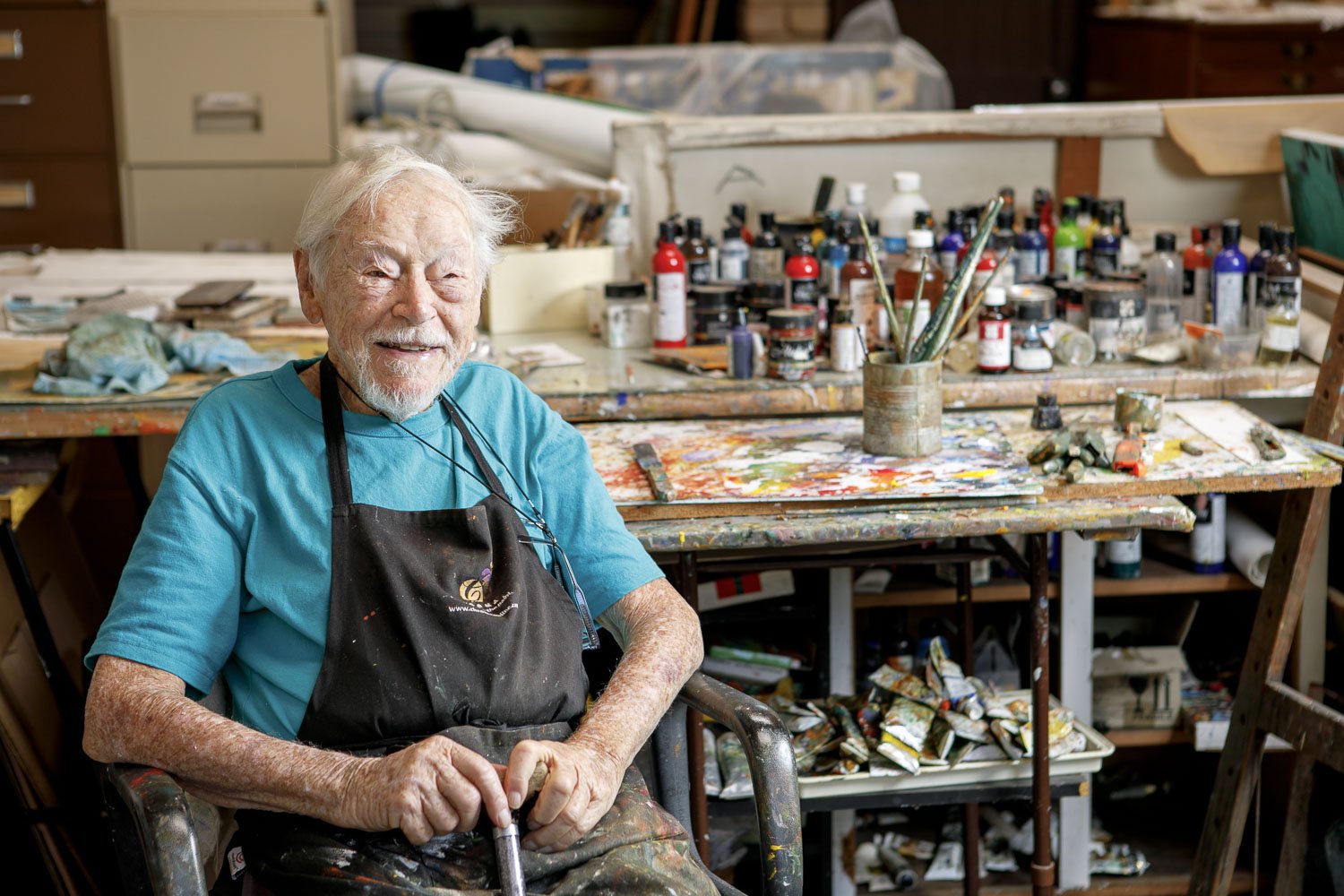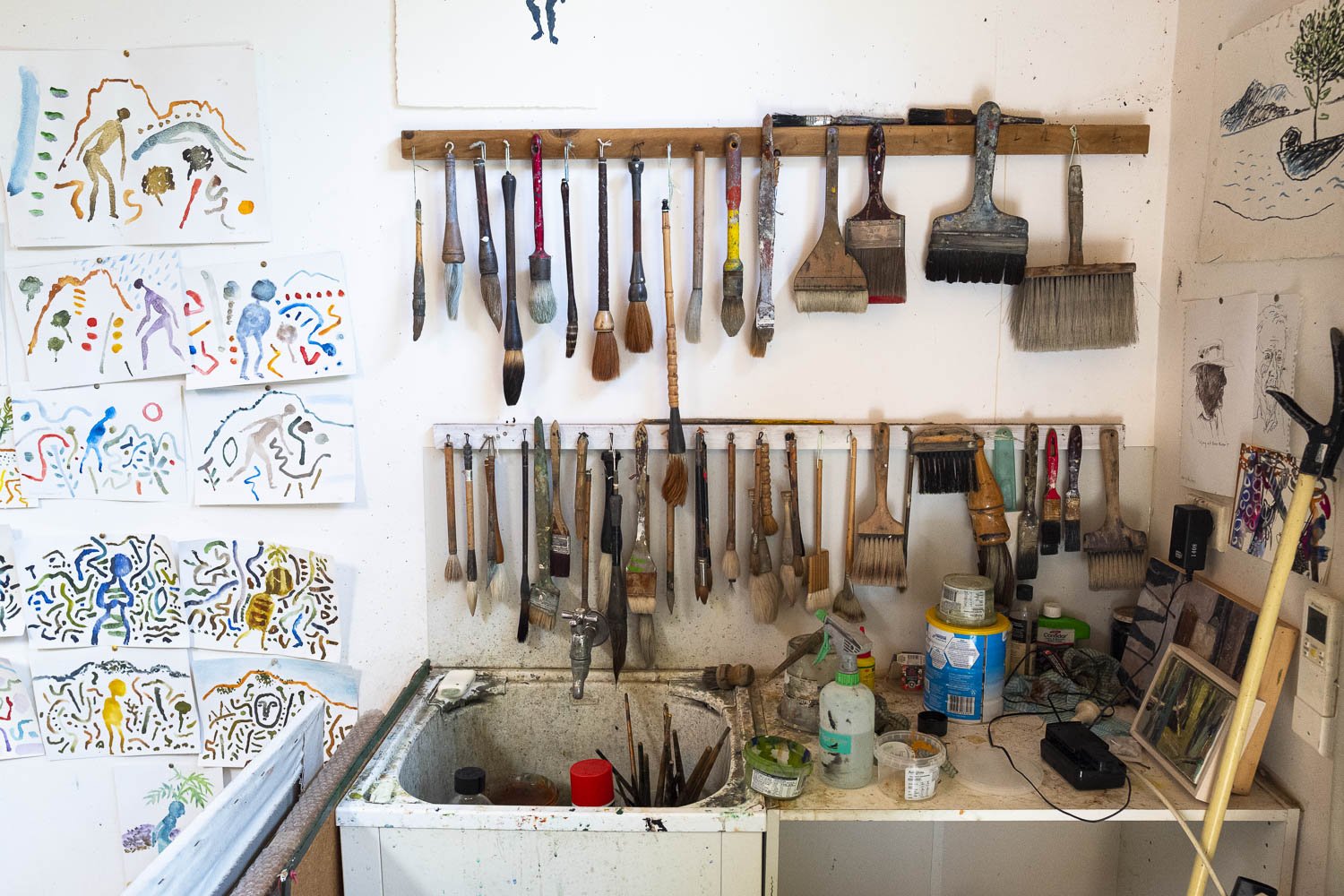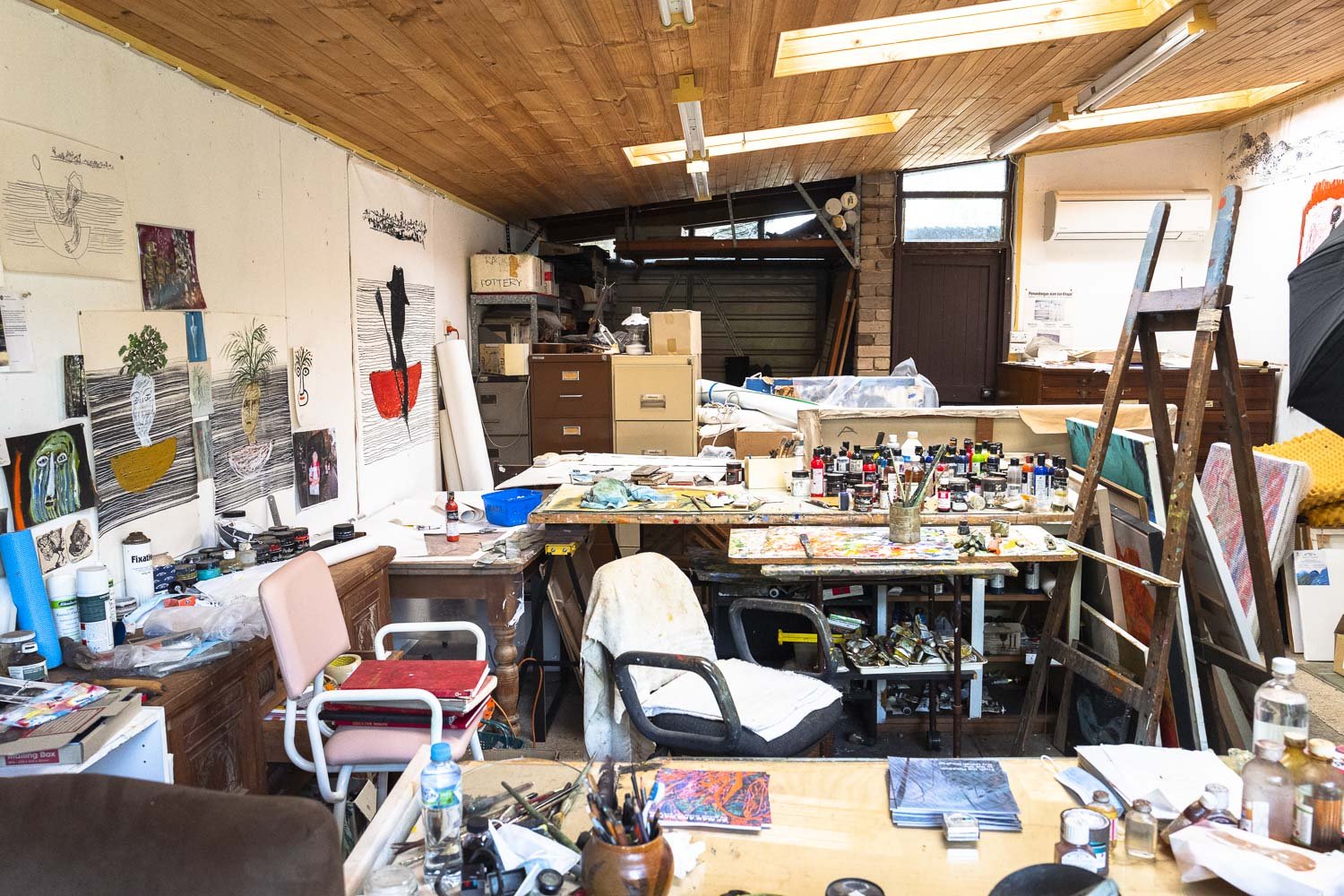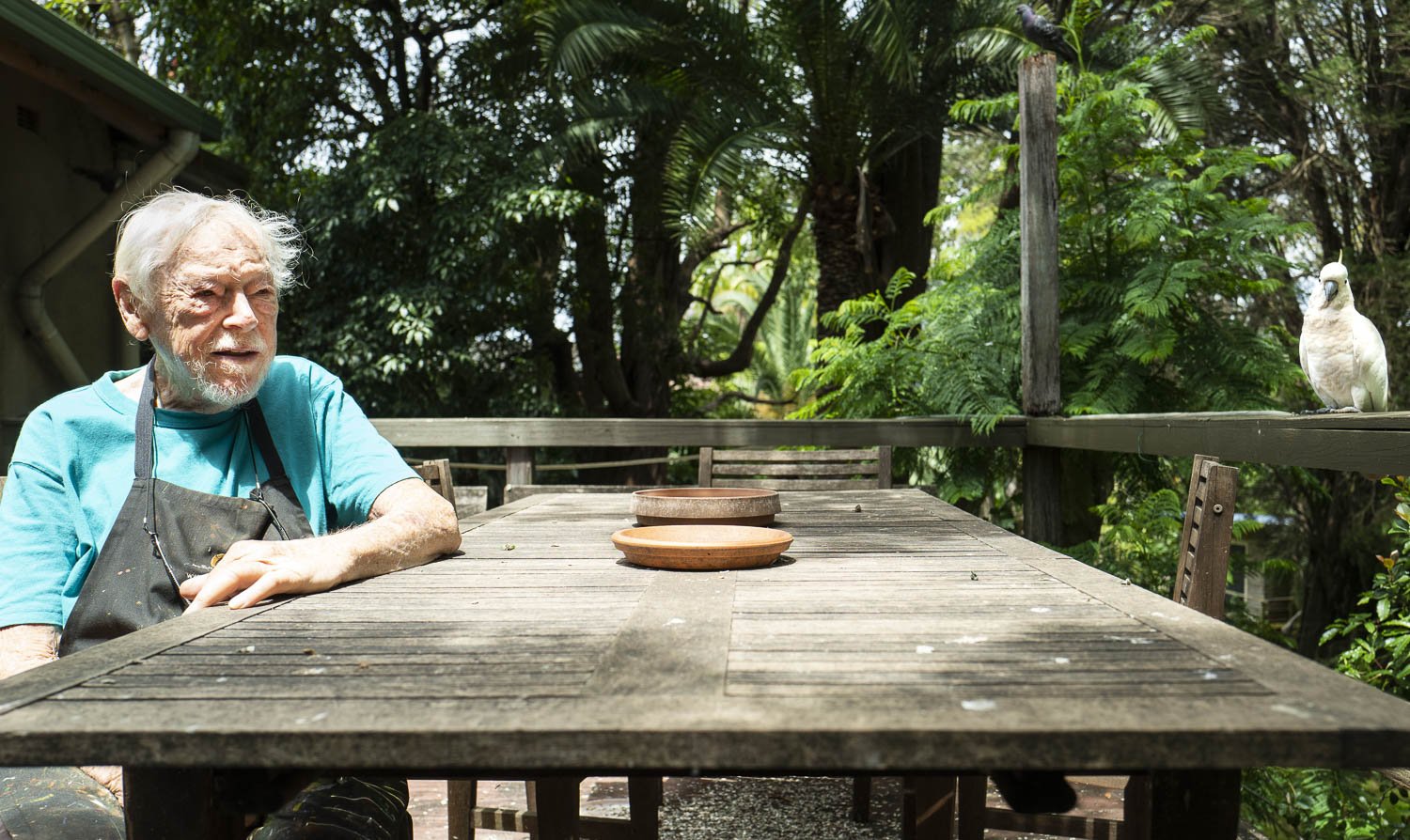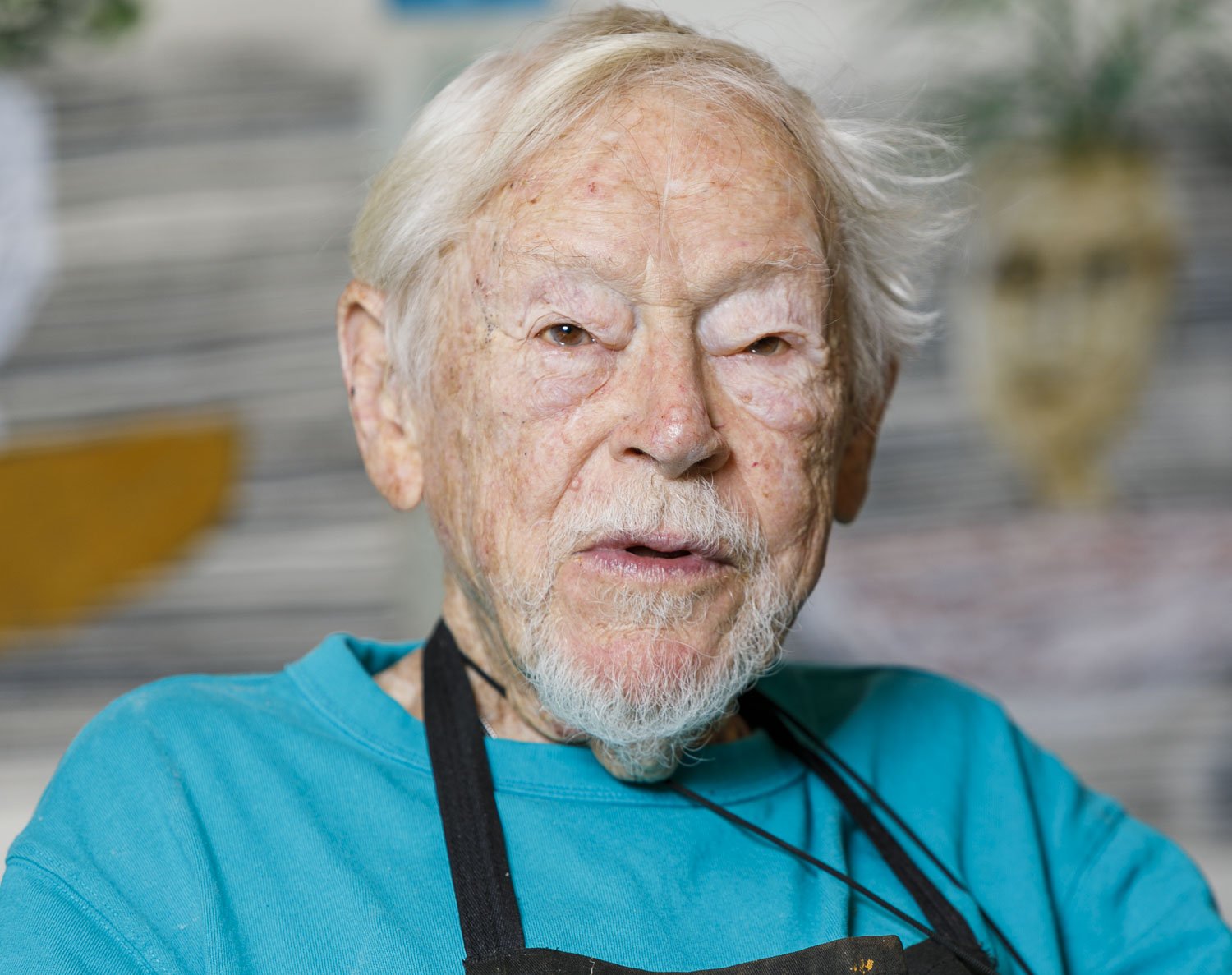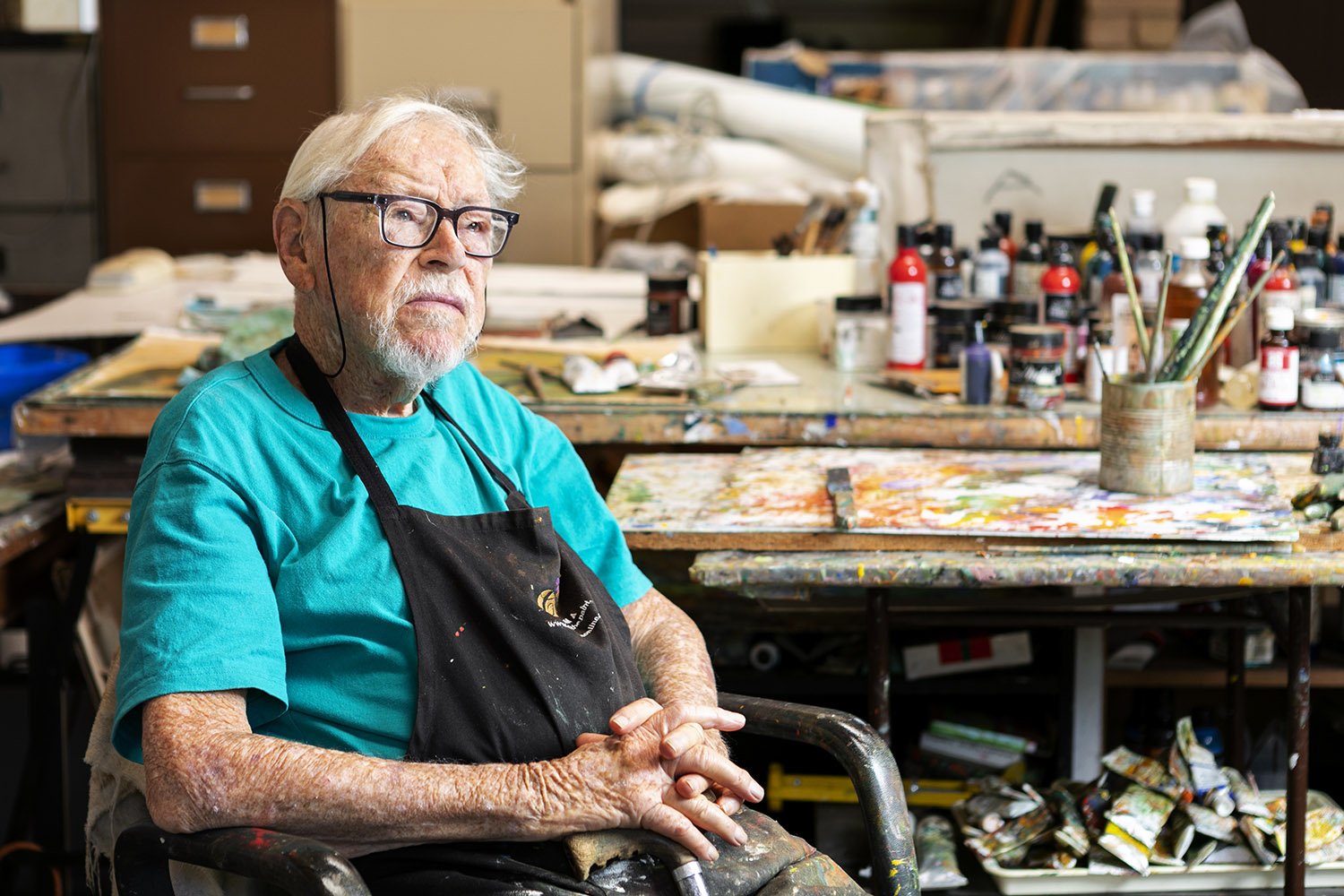Guy Warren
Army, Painter
Guy was born in 1921 in Goulburn, New South Wales.
“It was cold as buggery in winter, and hot as hell in summer.”
He experienced an itinerant life as a child, with his father, a piano man at the movies, who shifted the family from place to place every couple of years as contracts expired. Eventually, with the introduction of the talkies and the onset of the Great Depression, the work dried up.
Guy had no choice but to leave school in 1935, aged just 14. He was able to find work as an assistant proofreader for The Bulletin newspaper in Sydney.
“I had always enjoyed drawing, so I began bombarding the Art Editor with my own creations. Eventually, he got fed up, took me by the hand and walked me a couple of blocks to the JS Watkins Art School and told them to ‘teach this kid how to draw.’ He changed my life,” he says.
When World War II broke out, Guy enlisted and served in New Guinea and Bougainville with the 136 Advance Supply Depot, where he rose to the rank of Staff Sergeant. Many of his creative stimuli can be traced to these deployments, along with his experience at the Jungle Training Centre at Canungra in South East Queensland.
“By the time I entered the army at 21, when the other blokes sat down and played cards, which bored the hell out of me, I could sit down and draw them playing cards,” Guy recalls.
He drew the New Guinea landscape, soldiers at work and play, Japanese prisoners-of-war and the local people with their amazing headdresses and body decorations. On the day he was discharged, Guy took advantage of the post-war Commonwealth Reconstruction Training Scheme and enrolled at the National Art School in Sydney.
Shortly after graduation, Guy married Joyce Carney, who was always known as Joy. Travelling to London together, they remained there for eight years.
“It was what everyone did in those days. I found the English landscape a bit uninteresting to me. It was very beautiful but I didn’t want to paint it. It was as simple as that.”
Instead he started painting things from his memory of New Guinea.
“I saw a documentary about some bloke who was working there. He made a film of a festival where people from all over the Pacific came to dance. They wore feathers and flowers and masks. This was the kind of memory that I had of New Guinea and it was what I was trying to paint. I phoned the BBC and got a call back from this fellow. He said his name was David Attenborough and that he wanted to come around.”
The two occasionally kept in touch over the years and David sent him a card for his 100th birthday.
Guy and Joy returned to Australia where he alternated his painting with full time work. They had two children, Paul and Joanna. Joy, who died in 2011, remained the great love of his life.
“She became an important figure in the world of ceramics and a patient, long-suffering spouse to a man who could never see success in life as having anything to do with money or job security. I still wonder why she never made the slightest objection.”
From the 1960s to the 1980s, he experimented with different ideas and techniques.
“I’ve never wanted to be one of those people who paints the same boring picture for the rest of their lives. You can be conscious of the bank balance, or your freedom and your soul. I’ve always asserted the right to do whatever I bloody-well want to do.”
In 1985 he won the Archibald Prize, with a portrait of his friend, the sculptor Bert Flugelman. In this piece, he played on the translation of Flugelman’s name, which means Wingman, by adding the outline of a winged form that he’d used repeatedly in his paintings.
Guy’s paintings have always valued a connection with the earth. They include figures that are an integral part of the landscape, and not superimposed. He’s still dreaming and experimenting, with no thought of retirement at 101 years of age.
“I think artists are very lucky because there’s always something else one wants to do. Writers, poets and musicians are the same. They have other primal urges such as dance, telling stories, and making sound. It’s all about making things. There are certain things that we, as humans, have always done, while trying to understand our relationship to the real world. That’s what I’m still doing now.”
“What else would I do, for God’s sake? I’m never satisfied. I have too many doubts. One Australian critic says, in his blunt way, ‘the greater the artist - the greater the doubt.’ Perfect confidence is given to the lesser artist as a consolation prize. I think it was Picasso who said it wasn’t until he was 41 that he learned to paint like a child.
“No one ever warned me that, at 101, I would be busier than ever. I’ve just finished washing the brushes out from my work this morning. Drawing is a primal urge. Someone would have picked up a stick from a fireplace, many millennia ago, and made a mark on the cave wall. And we’ve been doing it ever since. At the same time, it’s a most human thing. It says, ‘I am alive. I am here.’ No other animal has ever been able to do this. It still happens today. The young ones are now painting graffiti. They put a tag onto it to let the world know they exist.
“I think artists are very lucky because there’s always something else one wants to do. Writers, poets and musicians are the same. They have other primal urges such as dance, telling stories, and making sound. It’s all about making things. There are certain things that we, as humans, have always done, while trying to understand our relationship to the real world. That’s what I’m still doing now.
“Drawing the landscape is making sense of where we fit into the world. That’s all it is. My name is Guy Warren and I’m a mark-maker. I’m a painter, an artist. I do things on a flat surface. That’s a bit stupid, if you come to think of it.
“People find it fascinating that I’m still working. Well, if I’m still alive and I’m still capable of working and still capable of making marks, then I’ll keep doing it. Reaching old age is a matter of good genes, good luck and a whiskey every night. Retirement is an absurdity! Give me another ten years and I might start thinking about retirement.”
Guy Warren is a recipient of the Archibald Prize (1985) and the subject of the Archibald Prize (2021) painted by Peter Wegner. He was awarded the Medal of the Order of Australia OAM (1999) and the Australia Medal AM (2013). He was awarded a Doctorate of Creative Arts (Honours) from the University of Wollongong (1998) and a Doctorate of Visual Arts (Honours) from the University of Sydney (2007). He was the principal lecturer and Head of Painting at the Sydney College of Arts from 1976 to 1985 and a Director of the Wollongong Art Collection from 1992 to 2002.
